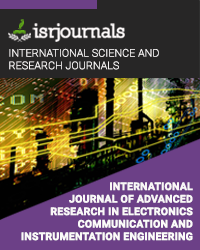artificial immune system in remote sensing images
K.ARCHANA,R.MONIKA2
Published in International Journal of Advanced Research in Electronics, Communication & Instrumentation Engineering and Development
ISSN: 2347 -7210 Impact Factor:1.9 Volume:1 Issue:1 Year: 08 November,2013 Pages:45-52

Abstract
In this paper, some initial investigations are conducted to apply Artificial immune system(AIS) for classification of remotely sensed images. As a novel branch of computational intelligence, AIS has strong capabilities of pattern recognition, learning and associative memory, hence it is natural to view AIS as a powerful information processing and problem-solving paradigm in both the scientific and engineering fields. There were few papers concern applications of AIS in feature extraction/classification of aerial or high resolution satellite image and how to apply it to remote sensing imagery classification is very difficult because of its characteristics of huge volume data. Remote sensing imagery classification task by Artificial immune system is attempted and the preliminary results are provided. The experiment is consisted of two steps: Firstly, the classification task employs the property of clonal selection of immune system. The clonal selection proposes a description of the way the immune systems copes with the pathogens to mount an adaptive immune response. Secondly, classification results are evaluated by three known algorithm: Parallelepiped_Minimum Distance and Maximum Likelihood. It is demonstrated that our method is superior to the three traditional algorithms, and its overall accuracy and Kappa coefficient reach 89.80% and 0.8725 respectively.
Kewords
Remote sensing, artificial immune system, pattern recognition, classification, immune algorithms.
Reference
[1] D. Dasgupta, 1999. Artificial Immune Systems and Their Application. Berlin, Germany: Springer-verlag. [2] F. M. Burnet., 1978. Clonal selection and after. In: Bell G I, Perelson A S, Pimbley G H eds. The Immunology, NewYork: Marcel Dekker Inc. pp.63-85. [3] F. M. Burnet., 1959. The Clonal Selection Theory of Acquired Immunity. Cambridge University Press. [4] J. E. Hunt, D. E. Cooke., 1996. Learning using an artificial immune system. Journal of Network and Computer Application 19(2): pp.189-212 [5] J. H. Carter., 2000. The immune system as a model for pattern recognition and classification. Journal of the American MedicalInformatics Association, 7(3): pp.28-41. [6] J. Timmis, M.Neal, and J.Hunt. ,2000. An artificial immune system for data analysis. Biosystem, 55(1/3): pp.143-150. [7] N. De Castro, F.J. Von zuben, 1999. Artificial Immune Systems: Part I-Basic Theory and Application, Tech. Rep-RTDCA 01/99. Campinas, SP: State [8] University of Campinas. BIOGRAPHY K.ARCHAN

